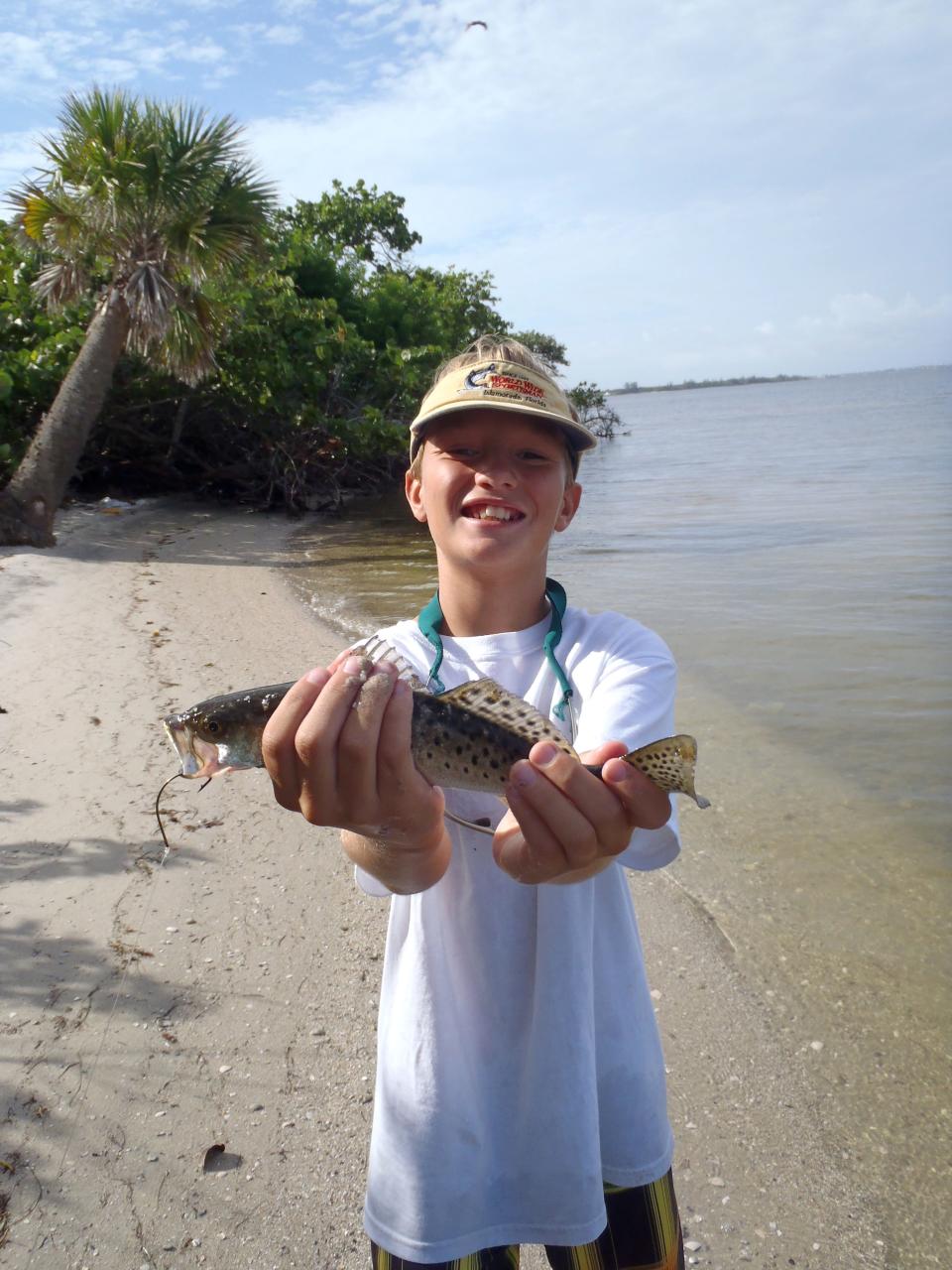Your yard leads to Indian River Lagoon. Want to preserve trout, manatees, dolphin? Then ...
Gravity always takes “water” to the lowest level, even in relatively flat coastal Florida.
Florida’s water flows to the Atlantic Ocean, Gulf of Mexico and coastal lagoons and bays. If you live on Florida’s coast, most of you are only a few feet above the lowest water level, and that lowest level is rising. There is likely a small ditch somewhere near your house to convey water from your home to the coast to keep your house from going underwater during tropical storms.
Growing up in Florida, I routinely witnessed flood waters from a number of hurricanes — Donna, Camille, David, Fran, Frances, Jeanne and Irma, who left bare home foundations, homes blown away or still there with only roofs showing above the water.
The ditch by your home usually drains to a canal, which sends water to the coast. That means you are connected to coastal waters even if you live miles inland. Whatever you do around your yard will wash into that ditch and eventually to the lagoon.
I live five miles inland. The canal by my house will drop water by my mailbox into the Indian River Lagoon within four or five hours when the flood gates are open. We are all directly connected to lagoon creatures such as blue crabs, shrimp, manatees, dolphin and spotted sea trout.
Years ago, nearly every kid that liked to fish Florida inshore waters caught a spotted sea trout. Fishermen from Georgia north thought trout were "brown," "rainbows" or "brookies." Not Florida kids! We never heard of rainbowsunder water. It was the beautiful and sometimes gigantic spotted sea trout pulling on the end of our line that was our trout. It often ended up on our dinner table.
Yes, we ate local fish back then and trout were common and delicious! They even supported our families.
For hungry sea trout, live bait was best: shrimp, shiners or pigfish. I marveled at their beauty when I caught one. The white circles around the dark spots stood out on the blue, green and yellow background glistening in the sun. Their color allowed them to blend in to a seagrass meadow.
You could catch all you wanted until you got tired. They were nearly always hanging around structure, mostly seagrass beds, where they were at home, feeding along the margin, or in a hole in the center.
Sea trout and seagrass lived together along with manatees, and their primary predator, the bottlenose dolphin. Manatees increase trout foraging habitat by creating openings in the grass bed, producing more edge where trout prey concentrate.

Manatees also spread seagrass by eating seagrass seeds, processing them, passing the seeds out in their feces as more viable and faster-growing seagrass seedlings. Manatees also spread seagrass seeds around the shallow coastal waters, making more seagrass meadows and more sea trout.
The most abundant resident fish in Indian River Lagoon seagrass meadows is the code goby, a diminutive fish gobbled up by the thousands by hungry sea trout. Sea trout are gobbled up by the thousands by bottlenose dolphin that ambush trout when they spawn.
When the sun sets, trout migrate to spawning sites, where males call their mates, attracting egg-laden females to spawn. They dance together, releasing millions of eggs, up to a million from a single large trout in a single night. She can return a week later and spawn again and again for four to six months.
Since we do not get millions of sea trout from each female, millions of trout eggs and larvae perish from natural causes. Adults are ambushed at spawning sites. Because spotted sea trout do not migrate far from their preferred spawning and feeding grounds, their presence or absence tells us a lot about the condition of their home waters.
When the water becomes polluted and sea grass disappears, spotted sea trout disappear. This has happened throughout the Indian River Lagoon. My grandchildren can no longer go fishing and, with certainty, catch a spotted sea trout.
No seagrass, no spotted sea trout, no manatees and fewer bottlenose dolphin.
Weed killers (herbicides) can kill seagrass, macroalgae and phytoplankton, all necessary to feed the entire aquatic ecosystem. A recent study of contaminants in fish conducted by the Ocean Conservation and Research Association revealed all of the spotted sea trout they examined contained glyphosate, a common herbicide used by homeowners, water managers and agriculture. The chemical is in the trout's food source.
Herbicides are designed to kill plants. Aquatic plants are particularly vulnerable.
Does anyone in Florida use herbicides, weed killers? Yes. Millions of people do.
But, I do not, never have and will not. I have a very green lawn that contains a wide variety of grasses and other small green plants. It is a diverse, miniature forest with relatively little cost and care.
I want seagrass, spotted sea trout, manatees and bottlenose dolphin. I want healthy, diverse Florida waters. Do you?
R. Grant Gilmore Jr., is senior scientist at Estuarine, Coastal and Ocean Science Inc., Vero Beach.
This article originally appeared on Treasure Coast Newspapers: Grant Gilmore: Here's one way you can help save Indian River Lagoon

